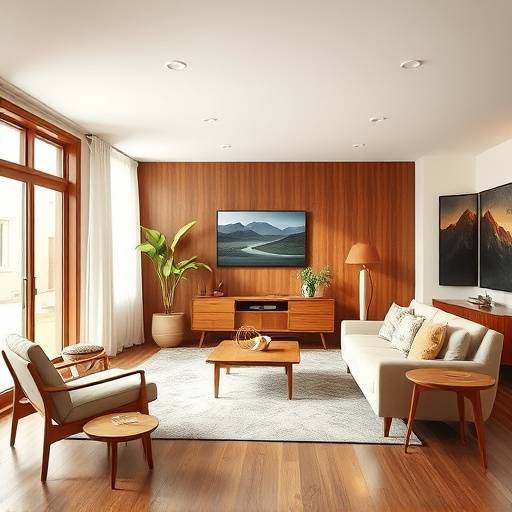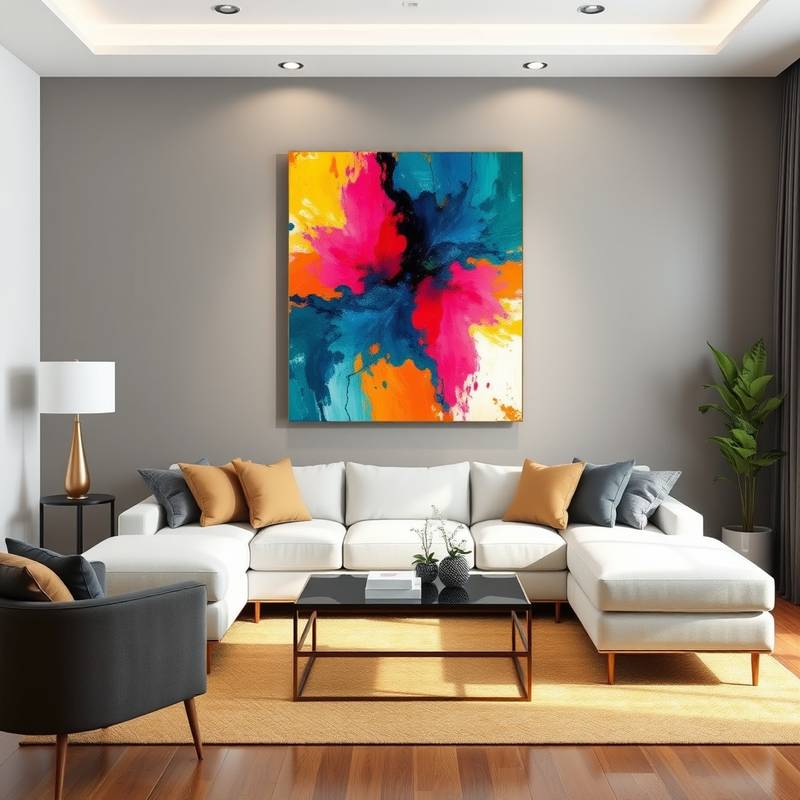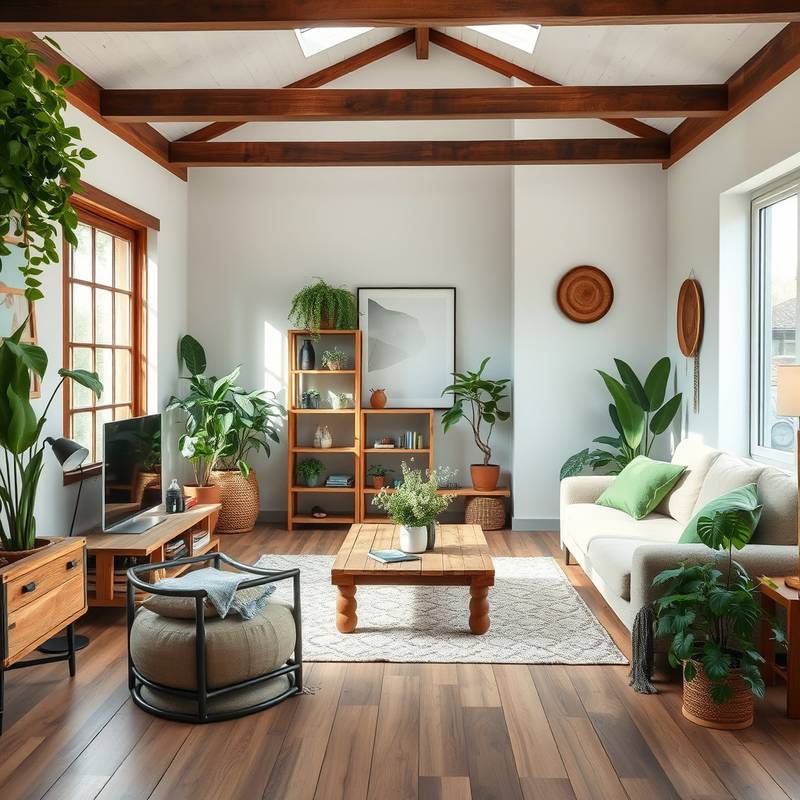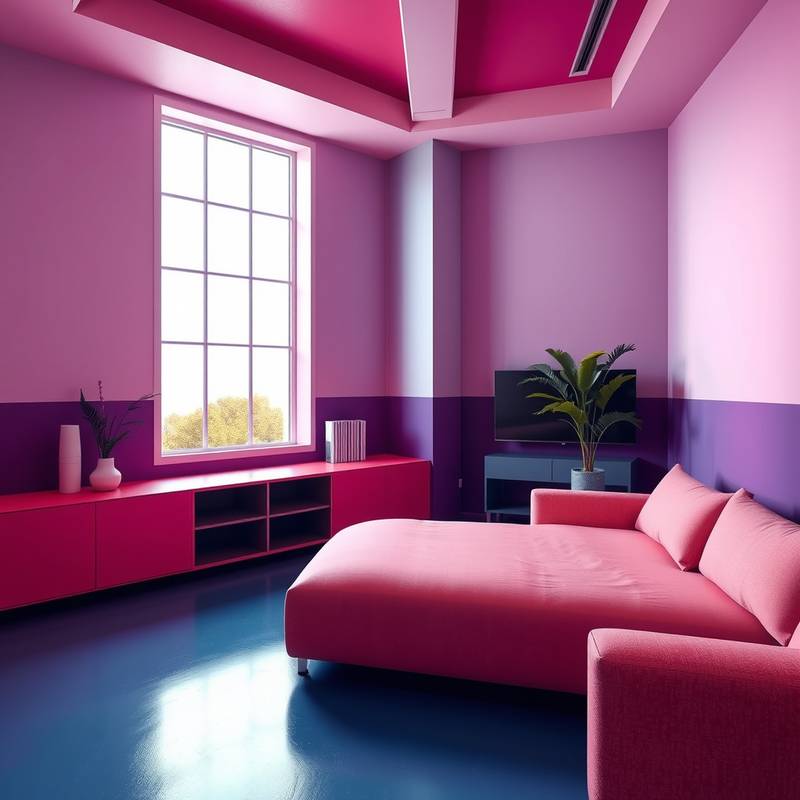The Enduring Appeal of Mid-Century Modern Design

Mid-Century Modern design, characterized by its clean lines, organic shapes, and emphasis on functionality, continues to captivate design enthusiasts. Originating in the post-World War II era, this style reflects a sense of optimism and innovation. Key elements include the use of natural materials like wood and leather, a focus on open floor plans, and the incorporation of iconic furniture pieces like the Eames Lounge Chair and the Saarinen Tulip Table.
The enduring appeal of Mid-Century Modern lies in its versatility and timelessness. It seamlessly blends into various architectural contexts, from minimalist apartments to sprawling suburban homes. Its emphasis on simplicity and functionality makes it a practical choice for modern living, while its stylish aesthetic adds a touch of sophistication and elegance.
Incorporating Mid-Century Modern elements into your home is easier than you might think. Start by introducing key furniture pieces that embody the style's principles. Opt for sofas and chairs with clean lines and tapered legs, and consider adding a statement coffee table or a vintage sideboard. Don't be afraid to mix and match different materials and textures to create a layered and inviting space.
Read More
Art as the Soul of Interior Design

Art plays a crucial role in interior design, adding character, personality, and depth to any space. A carefully chosen piece of art can serve as a focal point, anchoring a room and setting the overall tone. Whether it's a bold abstract painting, a serene landscape photograph, or a striking sculpture, art has the power to transform a room from ordinary to extraordinary.
When selecting art for your home, consider your personal taste and the overall style of your interior. Choose pieces that resonate with you and that complement the existing color palette and décor. Don't be afraid to experiment with different styles and mediums to create a curated collection that reflects your unique personality.
The placement of art is just as important as the selection. Consider the size, scale, and lighting of the room when deciding where to hang or display your art. Pay attention to the surrounding furniture and architectural features to ensure that the art is integrated seamlessly into the space.
Read More
Sustainable Design Practices for a Greener Home

As we become increasingly aware of our environmental impact, sustainable design practices are more important than ever. Creating a greener home involves making conscious choices about materials, energy consumption, and waste reduction. By incorporating sustainable design principles into your interior, you can create a healthier and more environmentally friendly living space.
One of the key aspects of sustainable design is choosing eco-friendly materials. Opt for reclaimed wood, bamboo, cork, and other renewable resources. Look for furniture and décor made from recycled materials, and choose paints and finishes with low VOC (volatile organic compounds) emissions.
Energy efficiency is another crucial component of sustainable design. Install energy-efficient lighting, appliances, and windows to reduce your energy consumption. Consider using solar panels to generate your own electricity, and implement smart home technology to control your heating and cooling systems more efficiently.
Reducing waste is also essential for creating a greener home. Compost food scraps and yard waste, recycle paper, plastic, and glass, and donate unwanted items to charity. Choose reusable products over disposable ones, and minimize your consumption of single-use plastics.
Read More
The Power of Color in Interior Spaces

Color is one of the most powerful tools in an interior designer's arsenal. It can evoke emotions, create moods, and transform the perceived size and shape of a room. Understanding the psychology of color is essential for creating spaces that are both aesthetically pleasing and conducive to well-being.
Warm colors like red, orange, and yellow are energizing and stimulating. They can add warmth and vibrancy to a room, but should be used judiciously, as they can also be overwhelming. Cool colors like blue, green, and purple are calming and relaxing. They are ideal for bedrooms and bathrooms, where a sense of tranquility is desired.
Neutral colors like white, gray, and beige are versatile and timeless. They provide a blank canvas for layering in pops of color and texture. Neutral color schemes are often used in minimalist and contemporary interiors, where simplicity and understated elegance are key.
When choosing colors for your home, consider the lighting, the size of the room, and your personal preferences. Experiment with different color combinations to create a palette that reflects your unique style and personality.
Read More